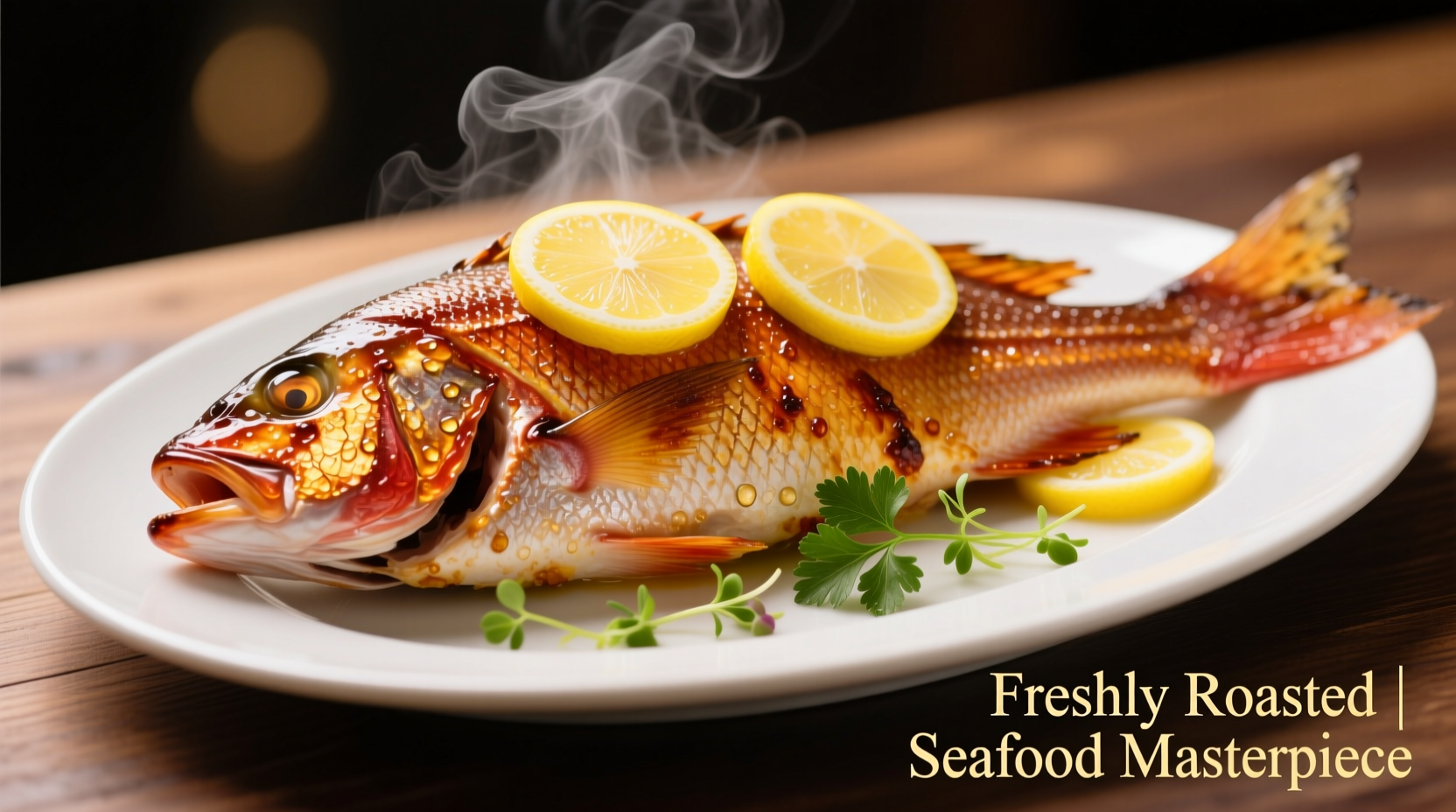The best way to cook a whole snapper is by roasting it in a 400°F (200°C) oven for 20-25 minutes after scoring the skin, seasoning generously, and stuffing with citrus and herbs. The fish is done when it reaches 145°F internally and the flesh flakes easily with a fork.
Mastering Whole Snapper: A Professional Approach for Home Cooks
Cooking whole fish intimidates many home chefs, but red snapper's firm texture and mild flavor make it the perfect candidate for beginners. Unlike fillets, cooking snapper whole preserves moisture and creates a dramatic presentation that elevates any meal. Professional chefs favor this method because the bones insulate the flesh during cooking, resulting in more evenly cooked, flavorful fish.Your Complete Whole Snapper Cooking Roadmap
Before you start cooking, understand the journey from market to plate. This roadmap follows your natural cooking process, addressing each decision point with professional insights.Step 1: Selecting & Preparing Your Snapper
Choosing quality fish: Look for bright, clear eyes, firm flesh that springs back when touched, and bright red gills without slime. A whole snapper between 1.5-2.5 pounds cooks most evenly.| Preparation Element | Professional Technique | Home Cook Shortcut |
|---|---|---|
| Cleaning | Scale thoroughly under cold water, remove gills and innards | Ask your fishmonger to clean it |
| Scoring | Make three diagonal cuts per side at 45° angle, 1 inch apart | Two deeper cuts per side work for home cooking |
| Drying | Pat completely dry with paper towels for 2 minutes | Don't skip this step - crucial for crispy skin |
Step 2: Essential Flavor Foundation
Professional chefs understand that seasoning penetrates better when applied both inside and outside the cavity. For authentic flavor:- Generously salt the entire fish 30 minutes before cooking (this seasons the flesh, not just the surface)
- Create a citrus-herb stuffing: 2 lemon slices, 3 lime wedges, fresh thyme and rosemary sprigs
- Rub olive oil mixed with minced garlic under the skin and in the cavity
- Finish with freshly cracked black pepper just before cooking

Step 3: Cooking Method Comparison
Different cooking environments require technique adjustments. The FDA recommends cooking fish to a minimum internal temperature of 145°F (63°C), but professional chefs watch for visual cues as well.| Cooking Method | Temperature | Time | Best For |
|---|---|---|---|
| Oven Roasting | 400°F (200°C) | 20-25 minutes | Indoor cooking, consistent results |
| Grilling | Medium-high heat | 12-15 minutes per side | Summer meals, smoky flavor |
| Pan-Seared | Medium-high heat | 6-8 minutes per side | Small snappers under 2 pounds |
Step 4: Perfect Roasting Technique (Most Reliable Method)
Oven roasting delivers the most consistent results for beginners. Follow these precise steps:- Preheat oven to 400°F (200°C) with rack in upper third
- Place fish on oiled baking sheet or in oven-safe skillet
- Roast 20-25 minutes (12-15 minutes per pound)
- Check doneness: flesh should be opaque and flake easily
- Internal temperature must reach 145°F at thickest part
Step 5: Serving Like a Professional
How you present whole fish dramatically impacts the dining experience. Chefs remove the dorsal fin before serving for easier handling. To serve:- Slide a wide spatula under the entire fish to transfer to platter
- Garnish with additional citrus wedges and fresh herbs
- Provide two serving utensils: one for lifting, one for flaking
- Offer lemon wedges and a light herb sauce on the side
Common Mistakes to Avoid
Many home cooks make these critical errors when preparing whole snapper:- Skipping the scoring: Without proper scoring, heat doesn't penetrate evenly, resulting in undercooked thick sections
- Overcrowding the pan: This steams rather than roasts the fish, preventing crispy skin development
- Peeking too often: Opening the oven door drops temperature significantly, extending cooking time
- Under-seasoning: Whole fish requires more seasoning than fillets due to greater surface area
When to Choose Alternative Cooking Methods
Context matters when selecting your cooking approach. Grilling works best during warmer months with proper equipment, while oven roasting delivers reliable results year-round. According to seafood safety guidelines from the FDA (FDA Seafood Guidelines), whole fish requires careful temperature monitoring regardless of method to ensure food safety.Frequently Asked Questions
How do I know when whole snapper is fully cooked?
Whole snapper is done when it reaches 145°F internally at the thickest part, the flesh turns opaque white, and flakes easily with a fork. The eyes will also turn milky white and bulge slightly when properly cooked.
Should I remove scales before cooking whole snapper?
Yes, you must remove scales before cooking. Use a fish scaler or the back of a knife, working from tail to head under cold running water. Proper scaling prevents unpleasant texture and ensures even seasoning penetration into the skin.
What's the best way to prevent whole fish from sticking to the pan?
Ensure your cooking surface is properly preheated before adding oil. Use high smoke-point oil (like avocado or grapeseed), and allow the oil to heat until shimmering but not smoking. Pat the fish completely dry and avoid moving it during the first 3-4 minutes of cooking to allow a crust to form.
Can I cook frozen whole snapper?
While possible, cooking frozen whole snapper yields inferior results. Thaw completely in the refrigerator for 24 hours before cooking. Frozen fish releases excess moisture during cooking, preventing proper browning and resulting in less flavorful, potentially mushy texture.











 浙公网安备
33010002000092号
浙公网安备
33010002000092号 浙B2-20120091-4
浙B2-20120091-4